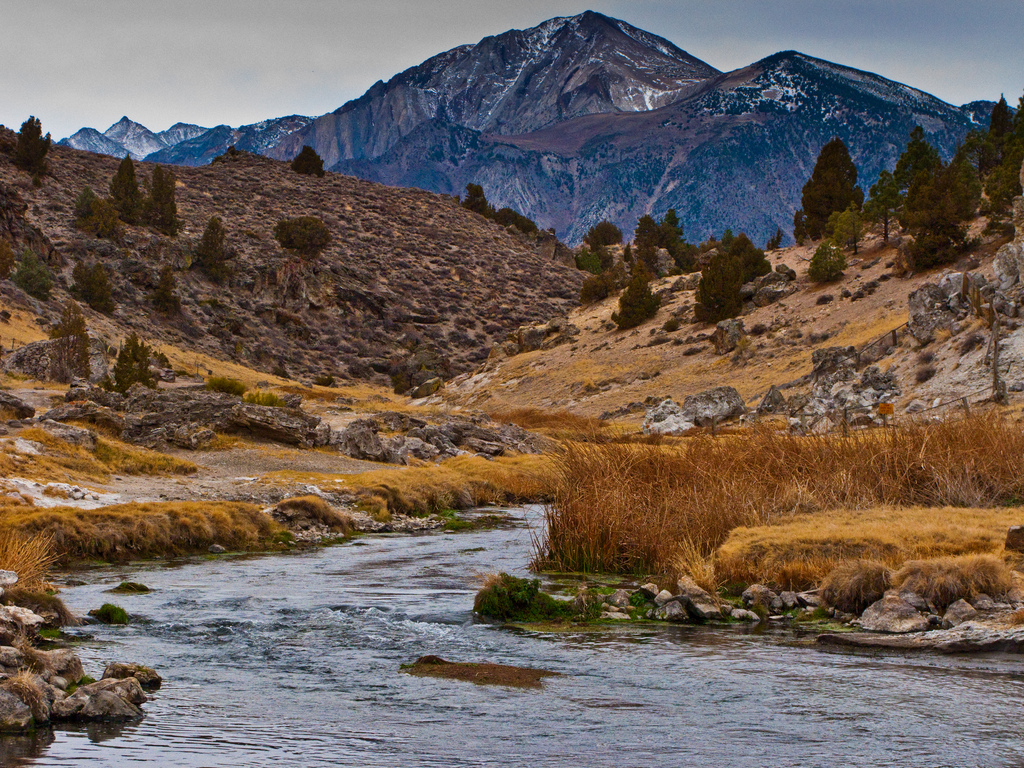Streams show varied response

Rising sea levels, melting glaciers, intensifying storm events – evidence is mounting that the effects of a warming planet will be far-reaching and potentially catastrophic. But one natural system may be more resilient than others when it comes to global warming: mountain streams.
Researchers from Oregon State University report in the journal Geophysical Research Letters that small streams in the western United States have not heated up in response to the region’s warming air temperatures.
Water temperature is a critical variable for aquatic ecosystems. Some fish, for example, time egg-laying to minute changes in water temperatures; in other species, stream temperatures are a key factor in determining the sex of juvenile fish.
The Oregon State team’s findings are based on an analysis of temperature data from 20 streams in seven western states, including California’s Hot Creek, a waterway fed by geothermal springs in Inyo National Forest, near Mammoth Lakes. (More than 600 streams were originally considered but that set was winnowed down, taking into account only streams with few human impacts and records spanning more than 12 years.)
“It is a small set and we are trying not to extrapolate too much from this data. But some streams in our study seem to be getting warmer,” lead author Ivan Arismendi told me. “Others are getting cooler and some have not changed much at all. But our data suggests that warming air temperatures are not having a corresponding effect on streams.”
The question, of course, is why. Arismendi explains that a number of factors in addition to ambient air temperature influence — and may buffer — stream temperatures, including wind and humidity, timing of snow melt, interaction with groundwater, and variations in solar radiation.
Other studies, such as a 2010 report published in the journal Frontiers in Ecology and the Environment, have suggested that streams and rivers in the U.S. are warming up along with the climate. But Arismendi points out that many of the waterways in those studies had lots of human influences such as stormwater runoff, impoundments and diversions. All can drastically influence water temperature, he adds, which makes it impossible to determine if it is the air or some other host of factors causing the rising water temperatures.
Arismendi says the research will continue, focusing on current computer models used to predict how streams will respond to a warming climate. “Most of the predictions in the models are based on a correlation [between air and stream temperature],” says Arismendi. “So we are trying to test how good those models are for specific sites.”
2 thoughts on “Study: Western Streams Resist Influence of a Warming Climate”
Comments are closed.

The reason that the streams have not shown any response to “warming” is because there has been NO WARMING. Please go look at the actual temperature record for the Western US. Sea levels are still rising at the constant rate that they have been since the last ice age..about 2 to 3 mm per year.
Mloe135,
I agree. More on the issue here: http://wp.me/p1NUuI-L2